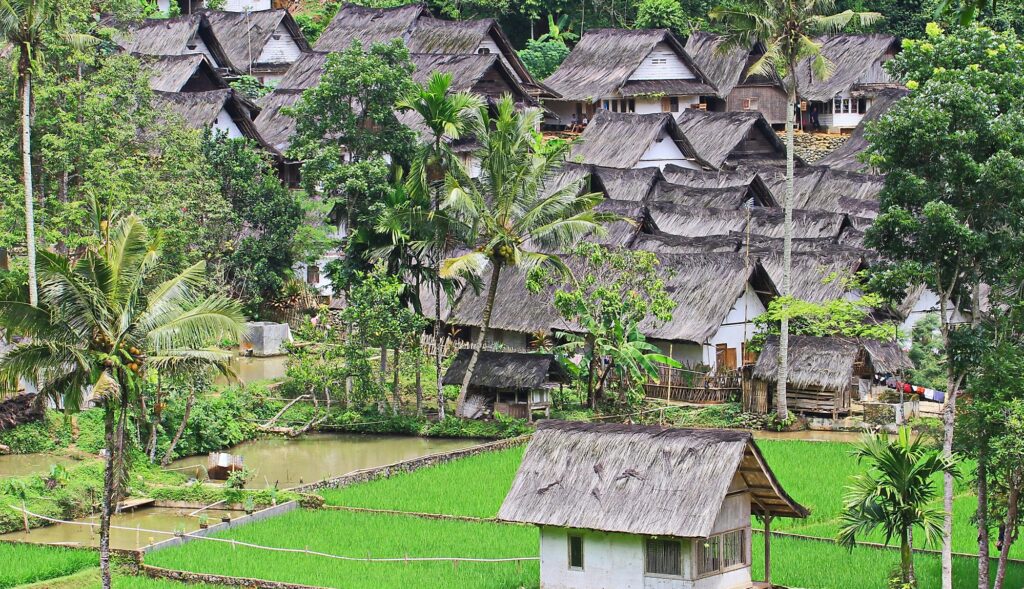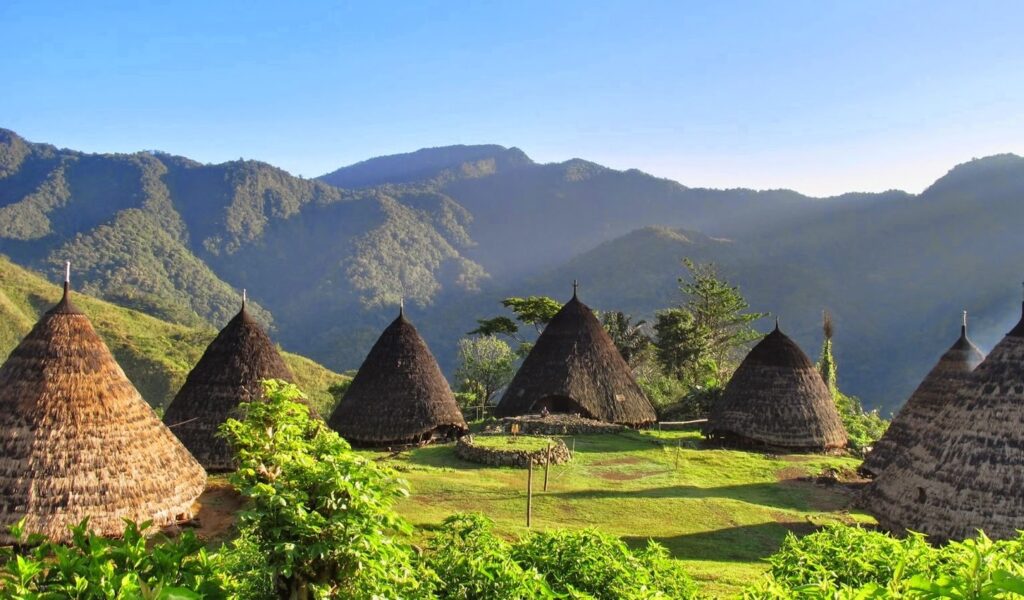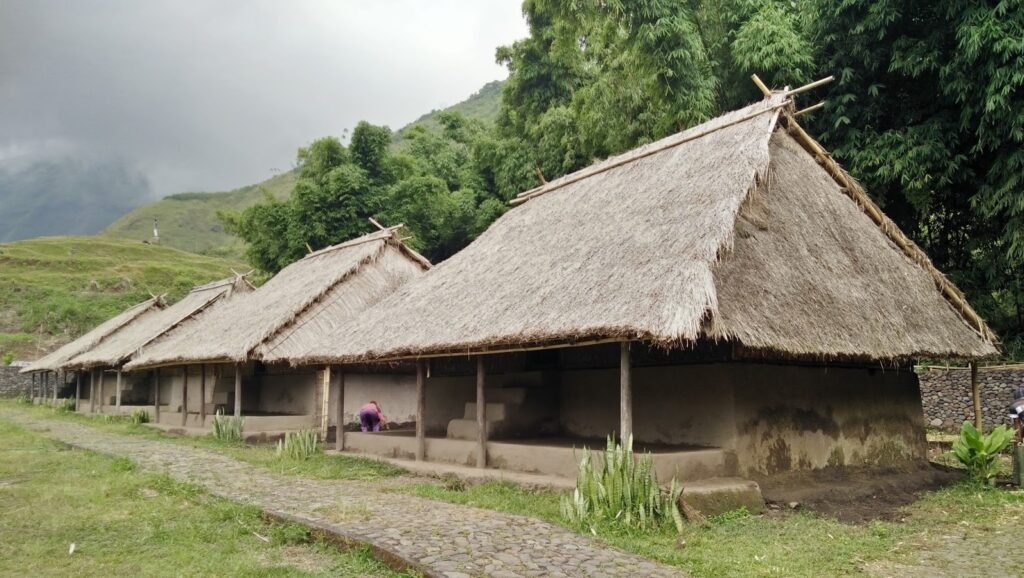Indonesia is a vast and diverse country that is home to many different races, religions, traditions, cultures, and natural wonders. The country is located in Southeast Asia and is made up of more than 17,000 islands, each with its unique history and identity.
Indonesia has a population of over 270 million people and is home to more than 300 ethnic groups, each with its unique language, culture, and customs. Some of the largest ethnic groups in Indonesia include the Javanese, Sundanese, and Batak, but there are many other smaller groups that contribute to the country’s rich cultural tapestry.
Indonesia is also home to several major religions, including Islam, Christianity, Hinduism, Buddhism, and Confucianism. Each religion has its unique customs and traditions, which are deeply intertwined with the country’s culture and way of life.
Indonesia’s diverse population has given rise to a wide variety of traditions and cultural practices. These range from the elaborate traditional dances of Bali to the intricate weaving techniques of Sumatra. Many of these cultural practices have been passed down from generation to generation and continue to be an essential part of the country’s identity.
In addition to its rich cultural heritage, Indonesia is also known for its stunning natural beauty. The country is home to several national parks, including the Komodo National Park, which is home to the iconic Komodo dragons, and the Gunung Leuser National Park, which is home to endangered orangutans.
Indonesia is also home to many traditional villages, each with its unique customs and way of life. These villages offer visitors a glimpse into the country’s rich history and traditions and are a testament to the resilience of the local communities.
Here Fascinating Traditional Villages must visit!

1.Tenganan Village is a traditional village located in the eastern part of Bali, Indonesia. The village is known for its unique customs and traditional way of life, which have been preserved for centuries. Tenganan Village is one of the oldest villages in Bali, and its residents are proud of their unique identity and culture. The village is surrounded by a fortress-like wall, which is believed to have been built to protect the residents from outside influences. Inside the walls, the village is arranged in a traditional layout, with houses lining narrow streets and open courtyards. The houses in Tenganan Village are unique in their architecture, with steeply pitched thatched roofs and high walls made from a mixture of clay and cow dung. Tenganan Village is also known for its unique weaving tradition, which has been passed down through generations. The villagers use a unique technique called “double ikat” to create intricate patterns on their textiles. This technique involves tying and dyeing the threads before they are woven into the fabric, creating a finished product that is both beautiful and durable. One of the most unique aspects of Tenganan Village is its traditional customs and ceremonies. The village is known for its annual ritual called “Usaba Sambah,” which is a celebration of the new year. The ceremony involves offerings to the gods, traditional dances, and other rituals that have been passed down through generations. The villagers also practice a unique martial art called “Mekare-kare,” which involves fighting with thorny pandanus leaves. Visitors to Tenganan Village can learn about the village’s unique customs and traditions by taking a guided tour or attending one of the village’s ceremonies. The village is also home to several small shops where visitors can purchase traditional handicrafts, including textiles, baskets, and wood carvings. Tenganan Village is a unique and fascinating destination in Bali that offers visitors a glimpse into a traditional way of life that has been preserved for centuries. The village’s unique architecture, weaving tradition, and traditional customs make it a must-visit destination for anyone interested in Balinese culture and history.

2. Toraja Village is a traditional village located in the highlands of South Sulawesi, Indonesia. The village is home to the Toraja people, who are known for their unique customs and traditions, particularly their elaborate funeral ceremonies. The village is surrounded by stunning natural scenery, including lush forests, rice terraces, and towering limestone cliffs. One of the most distinctive features of Toraja Village is its traditional architecture. The houses in the village are built in a unique style, with tall peaked roofs and ornate carvings on the exterior. The roofs are designed to resemble the horns of a water buffalo, which is a sacred animal in Torajan culture. The interior of the houses is also elaborately decorated, with colorful textiles and wood carvings. The Toraja people are known for their elaborate funeral ceremonies, which can last for days or even weeks. The ceremonies involve extensive preparations, including the slaughter of water buffalo and the brewing of rice wine. The ceremonies are meant to honor the deceased and ensure that their spirit makes a smooth transition to the afterlife. The funeral ceremonies also involve traditional dances and music, which are performed by members of the community. In addition to their unique funeral traditions, the Toraja people are also known for their skilled handicrafts. The villagers are skilled in weaving, woodcarving, and metalworking, and visitors can purchase traditional handicrafts in the village’s markets. Toraja Village is also surrounded by stunning natural beauty. The village is located in the highlands of Sulawesi, which offer breathtaking views of rice terraces, forests, and limestone cliffs. Visitors can take hikes through the surrounding countryside or visit nearby waterfalls and hot springs. Toraja Village is a unique and fascinating destination in Indonesia that offers visitors a glimpse into a traditional way of life that has been preserved for centuries. The village’s distinctive architecture, elaborate funeral ceremonies, and stunning natural scenery make it a must-visit destination for anyone interested in Indonesian culture and history.

3. Kampung Naga is a traditional village located in the Tasikmalaya regency of West Java, Indonesia. The village is home to the Sundanese people, who have lived in the area for centuries and have preserved their traditional way of life. The village is known for its unique architecture, traditional customs, and beautiful natural surroundings. The houses in Kampung Naga are built in a traditional Sundanese style, with thatched roofs and bamboo walls. The houses are arranged in a tight cluster, with narrow lanes and courtyards connecting them. The village is surrounded by lush forests and rice fields, which provide the community with their livelihood. The residents of Kampung Naga are known for their traditional customs, which have been passed down through generations. The community follows a strict set of rules and beliefs, which govern everything from their daily activities to their religious practices. Visitors to the village can observe traditional ceremonies and rituals, including the harvest festival and the Muslim holiday of Eid al-Fitr. The villagers of Kampung Naga also have a strong connection to nature, and many of their customs and beliefs are tied to the natural world. The village has a sacred spring, which is believed to have healing properties, and the villagers maintain a traditional system of irrigation to ensure that their rice fields receive enough water. Despite its traditional way of life, Kampung Naga has adapted to the modern world in some ways. The village has electricity and some residents have access to television and other modern amenities. However, the villagers remain committed to preserving their traditional way of life and passing it on to future generations. Kampung Naga is a unique and fascinating destination in Indonesia that offers visitors a glimpse into a traditional way of life that has been preserved for centuries. The village’s distinctive architecture, traditional customs, and strong connection to nature make it a must-visit destination for anyone interested in Sundanese culture and history.

4. Wae Rebo Village is a traditional village located in the Manggarai regency of Flores Island, Indonesia. The village is home to the Manggarai people, who have lived in the area for centuries and have preserved their traditional way of life. The village is known for its unique architecture, traditional customs, and beautiful natural surroundings. The houses in Wae Rebo Village are built in a traditional Manggarai style, with tall cone-shaped roofs and bamboo walls. The houses are arranged in a circle around a central courtyard, which is used for community gatherings and ceremonies. The village is situated on a hilltop surrounded by lush forests, providing stunning views of the surrounding countryside. One of the most distinctive features of Wae Rebo Village is its unique traditional customs and beliefs. The villagers practice a form of animism, which involves a deep connection to the natural world and the belief that all living things have spirits. The community also follows a strict set of rules and beliefs, which govern everything from their daily activities to their religious practices. Visitors to Wae Rebo Village can observe traditional ceremonies and rituals, including the annual harvest festival and the traditional Manggarai dance. The villagers also practice traditional handicrafts, including weaving and woodcarving, and visitors can purchase traditional souvenirs in the village’s markets. Despite its remote location and traditional way of life, Wae Rebo Village has adapted to the modern world in some ways. The village has electricity and some residents have access to television and other modern amenities. However, the villagers remain committed to preserving their traditional way of life and passing it on to future generations. Wae Rebo Village is a unique and fascinating destination in Indonesia that offers visitors a glimpse into a traditional way of life that has been preserved for centuries. The village’s distinctive architecture, traditional customs, and stunning natural surroundings make it a must-visit destination for anyone interested in Manggarai culture and history.

5. Beleq Gumantar Village is located in Gumantar Village, Kayangan District, North Lombok Regency, West Nusa Tenggara (NTB). This traditional village is quite close to Mount Rinjani National Park and has an area of approximately 1 hectare of traditional village. This area does not include customary graves and plantations. Beleq Gumantar Village is known as one of the traditional villages that still continues to preserve the original customs and culture of Lombok Island or the Sasak Tribe. Although this place is not as modern as urban areas, it is because of its traditionalism that it attracts tourists.This one tourist spot is able to increase the sense of cultural aesthetic passion. Various tourists from local and foreign circles come to visit to see first-hand the culture and traditions of Lombok Island Lombok Island traditional house buildings look very unique and distinctive. The buildings in this village are made of traditional materials. These traditional houses are arranged and lined up throughout the village. When viewed as a whole, this traditional Sasak house has a building architecture that is designed and made to resemble the shape of a stilt house. The materials used are still traditional, such as wood and thatch. The architectural design of the traditional Sasak house is made to withstand earthquakes. As well as avoiding hot air because it is only based on weeds and dry grass. The building area in Beleq Traditional Village is further divided into several areas, including Bale Pegalan, Penghulu House, Pemangku House, Raden House, Mekel House and Tuaq Lokak House.The people around, especially those who are native to the Sasak tribe, call this traditional traditional house a Bale. Beleq Gumantar Village still maintains the customs and culture of the ancestors of the Sasak Lombok tribe. So it’s not surprising that some houses are often used as places for traditional ceremonies because they are considered sacred by the local community. This village still applies caste levels. Beleq Gumantar Village has 3 different castes including the Raden Caste, Mangku Caste and Penghulu Caste. Of the 3 castes each has 1 function, according to customary and religious needs.
Indonesia is a fascinating country that is home to a diverse array of races, religions, traditions, cultures, and natural wonders. Its many traditional villages and cultural practices make it an excellent destination for those looking to immerse themselves in the country’s rich cultural heritage.
